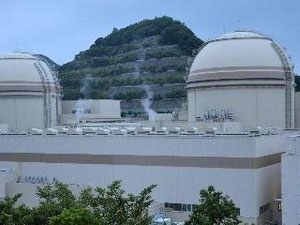Close to a non-white nuclear power plant
Large-scale research by British scientists, published Sept. 13, shows that children living near nuclear power plants are not at risk of developing leukemia or a type of cancer. is higher than normal non-Hodgkin lymphoma. This is contrary to previous concerns.
 After conducting a survey of about 10,000 children under 5 years of age and analyzing birth data for most cases of leukemia in the UK between 1962 and 2007, researchers did not find out. The risk of disease arises clearly from living near a nuclear power plant.
After conducting a survey of about 10,000 children under 5 years of age and analyzing birth data for most cases of leukemia in the UK between 1962 and 2007, researchers did not find out. The risk of disease arises clearly from living near a nuclear power plant.
Lead researcher John Bithell, from the Child Cancer Research Group (CCRG), said there were concerns about leukemia among children living around nuclear power plants in the UK since years. 1980, after a television program broadcast about the excessive increase in cancer in children near the Sellafield plant (in the northwest of England).
Since then, there have been mixed reports in the UK and some other European countries about whether children living near such reactors risk higher cancer.
A study in Germany released in 2007 found that the risk of disease will increase significantly. However, a survey conducted during the 35 years in the UK of the "Commission on Radiological Health Issues" published in 2001 found no evidence for living near a nuclear plant. increase the incidence of leukemia in children.
According to Bithell, the results from his research published in the British Journal of Cancer may help reassure the public. Bithell said: "Our control study examined the birth profile of almost all cases of leukemia in British children, and reaffirmed one thing that found no relevant relevance. between this disease and nuclear power plants ".
Leukemia is a cancer of immature white blood cells and usually occurs in children 2 to 4 years of age. This is a rare disease, with the number of children infected every year in the UK about 500 and according to experts, 85-90% of cases can be cured.
Bithell's team is funded by the British Government and "Children and Cancer in the UK" charity . The team measured the distance from where the children lived to the nearest nuclear plant at the time of birth and the time of detection of leukemia or non-Hodgkin lymphoma .
Hazel Nunn, Head of Medical Information for the "Cancer Research UK" charity said these results are encouraging.
Research has strengthened the results of the "Commission on Radioactive Health Issues in the Environment" that the birth or living near a nuclear power facility does not lead to a higher risk of developing white bridges or other types of cancer in children under 5 in the UK
- It takes 40 years to close Japanese nuclear power plant
- Korea closed two nuclear power plants for counterfeit components
- He built the first new generation nuclear power plant
- The earthquake caused the US nuclear power plant to close
- Russia is committed to building safe nuclear power for Vietnam
- The idea of a nuclear plant at sea, withstand the tsunami
- Japan built a new nuclear power plant in Aomori
- Fukushima nuclear plant lost power due to ... mouse
- The first floating nuclear power plant will operate in 2016
- US nuclear power pilot 'super safe'
- Russia tested floating nuclear power plant
- Method of extending the life of nuclear power plants
 Green tea cleans teeth better than mouthwash?
Green tea cleans teeth better than mouthwash? Death kiss: This is why you should not let anyone kiss your baby's lips
Death kiss: This is why you should not let anyone kiss your baby's lips What is salmonellosis?
What is salmonellosis? Caution should be exercised when using aloe vera through eating and drinking
Caution should be exercised when using aloe vera through eating and drinking